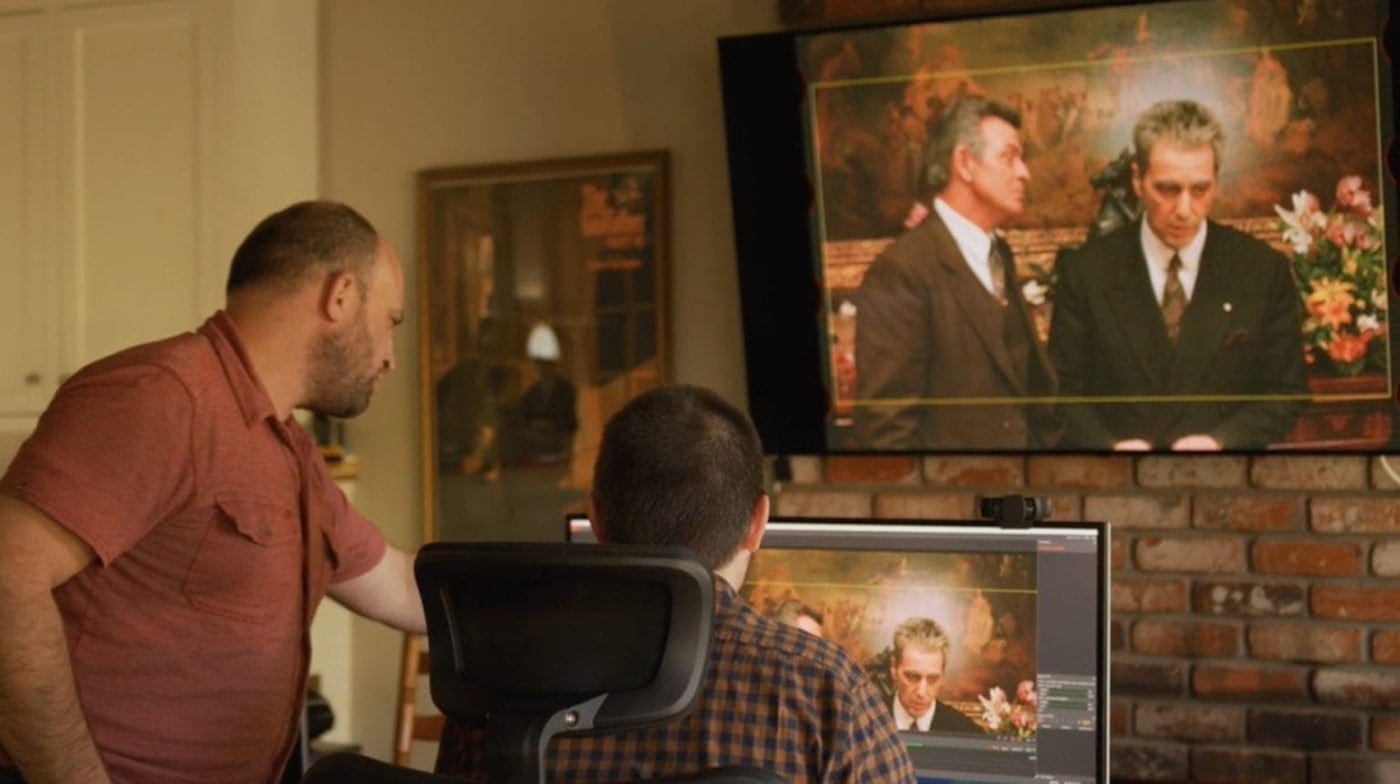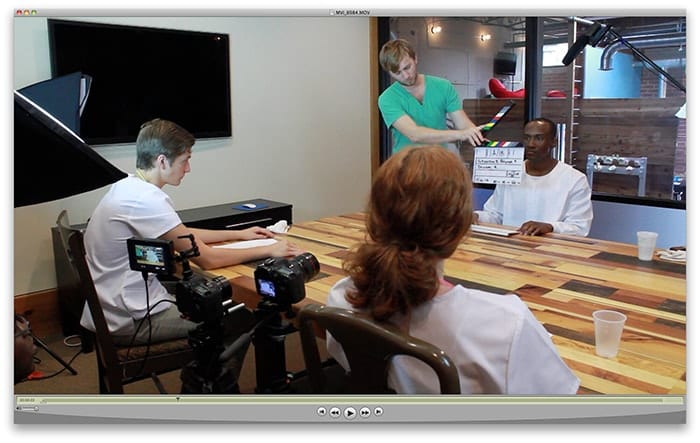There are few words as frustrating to the ears of a film and video editor as the phrase “We’ll fix it in post.” It’s a term that means a few things:
- Don’t worry about getting the shot right, we’ll just fix it in post.
- I know the lighting’s not perfect, but we can fix it in post.
- Don’t worry about those people in the background ruining the shot.
We’ll (all together now…) fix it in post.
It’s a phrase that conjures images of rushed producers trying to “make the day;” or an ad exec looking to stay on budget, minimizing, or downright dismissing the need to take the proper time to get a shot right. What is empirically missing from their calculations is the added work (and cost) needed to “fix in post.” Therefore, it feels like an utter lack of respect for the work of the editor or other post-production professionals.
How Bad?
But is it really as bad as many tend to think? Are there actually times when it’s okay to “fix it in post?” How can film and video content creators, whether doing it professionally or personally, know when it’s okay and when it’s not?
Today we start a 3-part series wherein I plan to offer what I believe will be the ultimate guide to fully understanding and addressing this issue. I’ll pull from my 25+ years of creating video content, both personally and professionally, and I will also tap the experience of other pros in the business.
I also want to dabble in a bit of a philosophical perspective when it comes to this issue. It can be so very easy to jump to the usual response and outlook without thinking outside the proverbial box.
Part 1: Fixing in Post on Purpose
The overwhelming interpretation of the phrase “fix it in post” presumes that the thing you need to fix is some kind of mistake. That is understandable. But I would be remiss not to mention that there are aspects of film production you “fix” in post on purpose. Most notably: color grading.
Color Grading
Just about all professionally shot productions—whether for theatrical/streaming release or for big-budget ads—shoot either in raw or in some kind of flat picture profile. These low saturation, low contrast profiles allow the camera to preserve more visual information and give the editor or colorist more flexibility in post.

Some of you reading this may be calling “foul” for me bringing up this example because of the fact that everyone knows and expects something like color grading to be done in post. And that is true. But this is where I want to have some fun with a philosophical discussion, so to speak.
Time & Cost
The whole issue of “fix it in post” comes down to two issues: time and cost. Oftentimes, the decision to fix it in post is made because some stakeholder with the power to make the call (i.e., a director, producer, ad exec client, etc.) makes the decision because they think doing so will save time and cost. Right? Something happens on set, or some aspect of pre-production was missed, and now the production is on day 25 of a shoot that was supposed to be 24 days, and every extra minute is costing money. So they say we’ll “fix it in post.” What they don’t often understand is the cost to use visual effects (VFX) to rotoscope something out of a moving shot, might actually be just as, if not more expensive, than just taking a little bit of time to fix whatever it is that needs fixing. Or the resources at hand to fix a poorly exposed shot, or worse, bad audio, might not be available in post, thereby creating a substandard end-result.
But here is where my philosophical point comes in: one could argue that shooting a project with “the look” baked in (i.e., not shooting flat or in raw for color grading later, but instead setting your camera and on-set LUTs to create the look you want IN-camera) is considerably less expensive and time-consuming than shooting flat or in raw, and spending god-knows how long grading it. Why “fix” it in post to color grade it instead of just shooting it to look the way you want. It’s akin to shooting in black and white vs. shooting in color then changing to black and white in post.
Now, I know there are a whole host of reasons for shooting flat or raw. I’m not discounting the value of that technique, particularly on large productions. But, there could very well be small productions where shooting with a baked-in look is reasonable and preferable to grading in post. The cost savings may be worth the trade-off of less flexibility in post. On rare occasions, I have done that when shooting projects for non-profits that didn’t have the budget for an extensive post-production schedule.
Hey, speaking color grading, be sure to check out how the Accelsior 4M2 was used on the remastering of Godfather 3.
So, if your argument for not “fixing it in post” is that the cost associated with rotoscoping a bad shot isn’t worth it, in some cases, you could save exponentially more money shooting baked. (Okay. Maybe not “exponentially” more. I don’t want you math-wizards out there sending me emails. How about, logarithmically more money. Pun intended).
VFX Alternatives
Likewise, there are some alternatives to visual effects you can use that will save a ton of money in post. Instead of adding thousands, and in some cases, tens of thousands of dollars in post-production VFX, you might get creative and shoot in a way that eliminates the need for the VFX. You change an exterior shot to interior to eliminate the need to add a skyline. You shoot in a burned down abandoned zoo to represent a post-apocalyptic world (as a kid, I would go to Griffith Park Boys Camp, and we’d hike to the location of the old LA Zoo. It looked like something right out of the original “Planet of the Apes.”)
A short satirical film I shot a while back takes place in a dystopian future where marriages automatically expire after three years. To “create” the look, we shot in a spartan office, and I had an intern create some simple translucent graphics to create a virtual terminal.
The moral of this philosophical story is that if time and money are really your issue, then you could take that mindset to the Nth degree and apply to all sorts of the filmmaker process. If you’re fine adding tens of thousands of dollars to a production for color grading, what’s a few extra thousand to rotoscope out a Starbucks coffee cup accidentally left on set?
Now that we’ve established that not “fixing it in post” could just as well be applied to color grading and some light VFX, let’s turn our attention now to the bigger issue at hand. The one that most people think about when it comes to this phrase. What happens when something unexpected and unplanned happens and you need to decide whether or not to fix it in post?
We cover that topic in Part 2.















“The whole issue of “fix it in post” comes down to two issues: time and cost.” I think we have to add a third issue, “quality”. There are plenty of things that simply cannot be fixed in post with the same level of quality as they can be done on the set. There are a few things where the reverse is true, special effects being one subset. It’s very sad when the decision to ‘fix it in post’ costs more time, more money, and looks worse than fixing it on the set would have.
The author wisely points out that sometimes, the best solution is to reconceive the scene, to avoid elaborate problems both on set and in post.
That is an excellent point Derek. Quality is definitely something that suffers when something is “fixed in post” when it shouldn’t have to be. I actually address this issue somewhat in part 2. :)
Bad lighting and bad makeup cannot easily be fixed in post. Those are the two simple things I see all the time, and it’s frustrating to know if I had been on set, I could have solved those problems in 5 or 10 minutes. (Bad audio in loud locations and bad mic placement are the bane of post sound mixers.)
Thanks for your reply Marc. I totally hear you brother! In part 2 I address both those issues (lighting and audio). But you’re right. There are simple things that could be done on set that should be considered before jumping right to “fix it in post.”